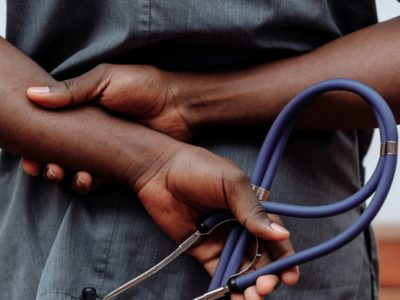Congress has just passed the $1.9 trillion COVID-19 rescue package, the biggest stimulus the country has ever seen; bigger than the New Deal of the 1940s and more expensive than all the post-9/11 wars combined. The package includes many provisions to kick the country’s economy into high gear, including a fresh round of unemployment benefits, $1,400 checks to eligible Americans, and the child tax credit, which could cut child poverty in half.
The bill is also about more than just putting money in people’s pockets. It’s about making sure citizens have access to healthcare and insurance during this difficult time. Find out what the American Rescue Package means for you.
The Push for Vaccinations
The rescue package is also designed to speed up the vaccination process. It allocates billions of dollars to help government agencies get the COVID-19 vaccine out to as many people as possible. The Department of Health and Human Services will get $7.5 billion to promote, distribute, and monitor the drug as many states start ramping up the vaccination process.
The CDC will get around $1 billion to raise awareness of and engagement in the vaccine. The Indian Health Service, which caters exclusively to the country’s Native American population, will get $600 million for similar efforts, and the FDA will get $500 million to support the development and surveillance of new vaccines and therapeutics.
The bill is also here to make sure individuals on Medicaid do not have to pay to get vaccinated. The federal government will reimburse states using this money for vaccinating those on Medicaid.
Testing and an Eventual Return to Normal
In addition, the government is beefing up the country’s approach to coronavirus testing. The package includes $50 billion for a national testing strategy, including contact tracing, surveillance, and mitigation. Around $7.6 billion will go to public health departments and their partners to hire additional contract tracers, healthcare workers, nurses, and lab personnel. These additional contact tracers will help the country slowly reopen as the vaccination rate increases. They will identify, analyze, and course correct as new hotspots appear.
Another $7.6 billion will be used to address health disparities that have only gotten worse throughout the pandemic, including higher vaccination rates among white Americans compared to communities of color. $250 million will be used to establish nursing home “strike teams” that will help facilities combat the spread of COVID-19.
Non-COVID-19 Healthcare Policies
The American Rescue Package is being passed along party lines, and Democrats aren’t shy about the fact that they are using this bill to strengthen the Affordable Care Act, which passed under former President Obama, to help more low-income and uninsured Americans get insurance.
The new bill adds a Medicaid provision that gives states the option to cover low-income women who just had babies under Medicaid for a year after giving birth.
As for the ACA, the package gives more people access to the program by expanding eligibility, so that those making up to 150% of the federal poverty line can now receive 100% subsidized insurance premiums for the next two years.
Those with incomes 400% above the federal poverty line can receive subsidies so that they don’t have to pay more than 8.5% of their income on marketplace health insurance premiums.
Around 11.5 million people already use the ACA health insurance exchange marketplace. They receive subsidies in the form of tax credits to help them pay for insurance and healthcare. Now, these individuals and families will be able to recalculate their benefits once the new rules go into effect.
Karen Pollitz, a senior fellow with the Kaiser Family Foundation, says, “They could go into healthcare.gov and update their account to get the higher tax credits going forward.”
Millions of people have lost work during the pandemic, including their employer-sponsored health insurance. The U.S. still has around 10 million fewer jobs than it did one year ago. Millions of people have been living on employment over the last 12 months, and some have been making more than they are used to. Current law would force these people to repay these tax benefits or subsidies when they pay their taxes, but the American Rescue Package would change that. Those on unemployment will still qualify for the exchanges. Under the new rescue bill, any amount above 133% of the poverty level would generally be disregarded in the calculation for subsidies through the exchanges.
The Consolidated Omnibus Budget Reconciliation Act (COBRA) is a health insurance program that helps eligible employees and their dependents stay on their company’s health insurance when they lose their jobs. The relief bill subsidizes COBRA premiums for those who have been laid off through September.
It also increases how much states will receive if they decide to expand Medicaid. There are currently 12 states that have yet to expand the program.
President Biden plans to sign the bill into law on Friday. The American Rescue Package should help more people get access to insurance as we continue to ride out the pandemic.

















